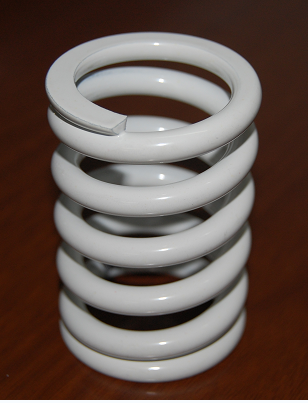How to design and calculate a reasonable shaped springs?
With the development of Shaped springs application technology, more requirements are put forward for Shaped spring materials. Mainly in terms of improving fatigue life and anti-relaxation performance under high stress; secondly, according to different purposes, it is required to have corrosion resistance, non-magnetic, electrical conductivity, wear resistance, heat resistance, etc. For this reason, in addition to the development of new varieties of Shaped spring materials, it has also achieved beneficial results in strict control of chemical composition, reduction of non-metallic inclusions, and improvement of surface quality and dimensional accuracy.
(1) Development of Shaped Spring Steel Production Process In order to improve the quality of Shaped spring steel, industrially developed China has generally adopted out-of-furnace refining technology, continuous casting technology, new rolling and online automatic detection and control equipment.
In order to ensure the chemical composition of steel and reduce the content of gases and various non-metallic inclusions, a large-capacity electric furnace or converter is used for smelting, and an external ladle is used for refining to reduce the oxygen content (mass fraction) to (0.0021~0.0010)%. Produce ultra-pure steel, which greatly improves the design and working stress of the Shaped spring.

The split-type full continuous rolling mill can improve the dimensional accuracy and surface quality, and at the same time make the steel microstructure uniform along the length. In order to ensure the surface quality of the product during the rolling process, online automatic detection and control are adopted. In order to be suitable for the production of variable cross-section Shaped spring flat steel, a new austenite rolling process was developed, that is, the steel is heated to the austenite zone and then quenched to the metastable austenite zone for plastic processing and quenching. This process can increase the strength of the steel without reducing its plasticity. In addition, the properties of Shaped spring steel can be improved by online heat treatment and surface hardening after rolling.
(2) The development of alloy steel The main function of alloying elements is to improve mechanical properties, improve process performance and give certain special properties. SiCr steel has been applied to valve Shaped spring and Suspension Shaped spring. Si is an anti-stress relaxation alloy element. Adding V and Mo to SiCr steel forms SiCrV and SiCrMo steels, which can improve fatigue life and anti-relaxation properties. At the same time, SiCr drawn wire has better relaxation resistance when working at high temperatures than piano wire and carbon Shaped spring wire for important purposes. With the high-speed and miniaturization of engines, Ti alloys with good anti-flutter performance, light weight and small elastic modulus have been widely used, and their strength can reach 2000MPa.
评论
发表评论